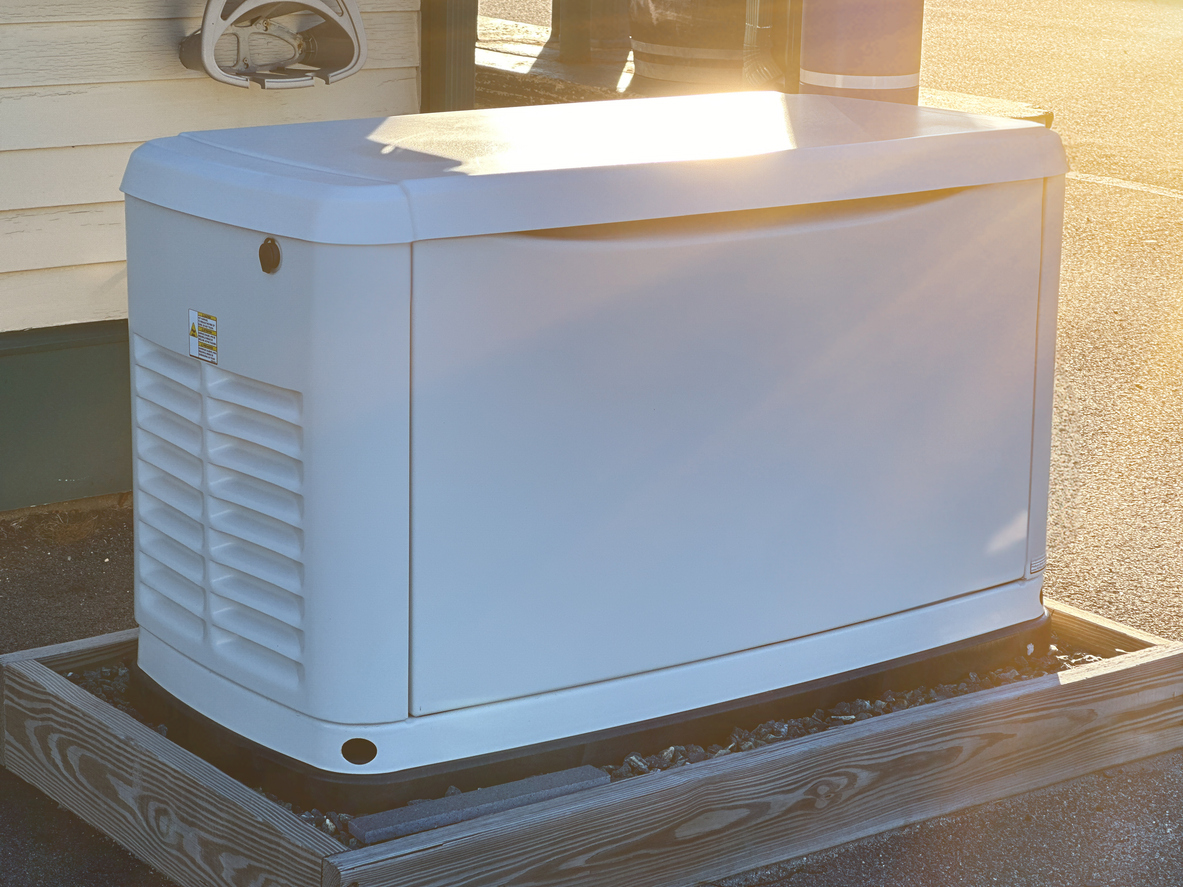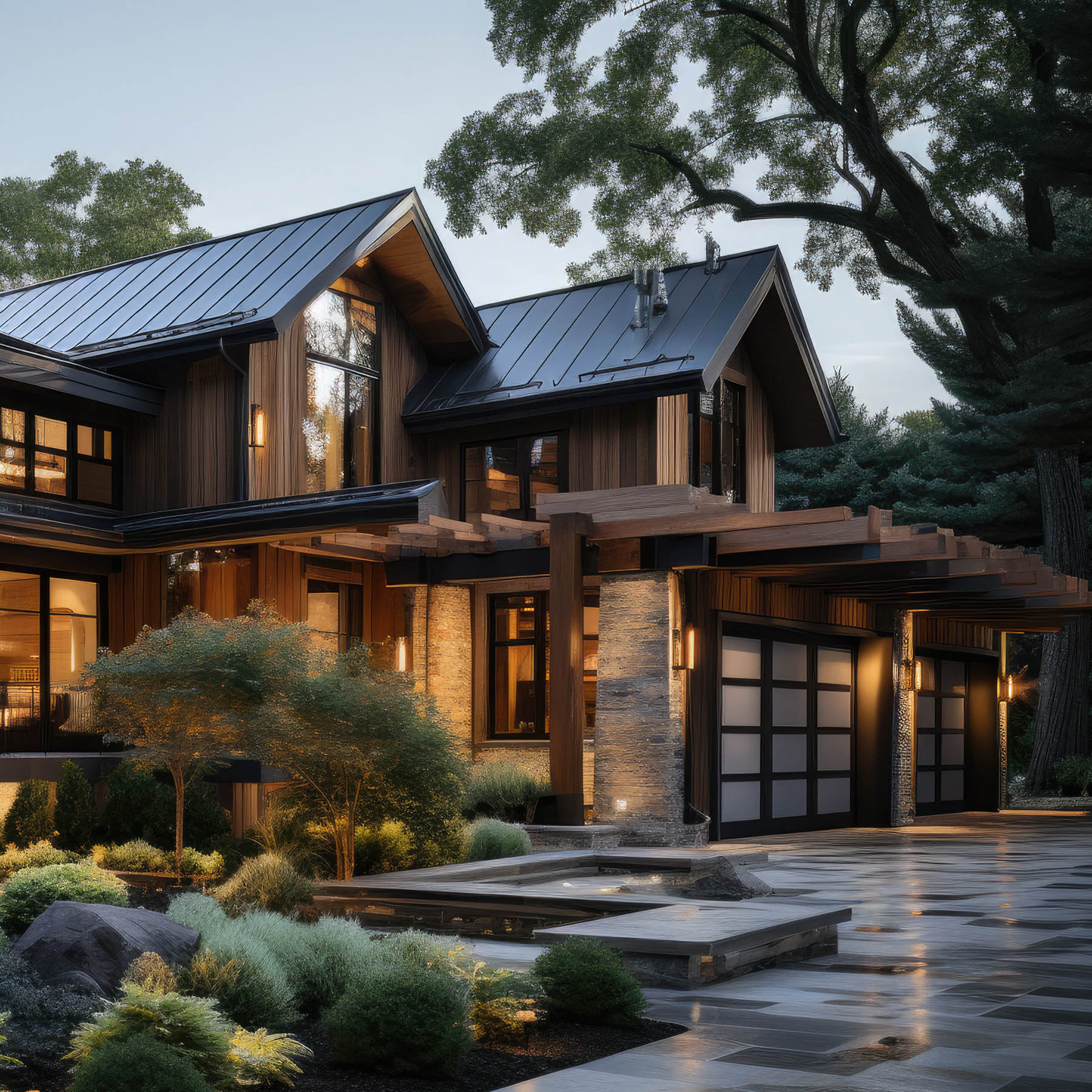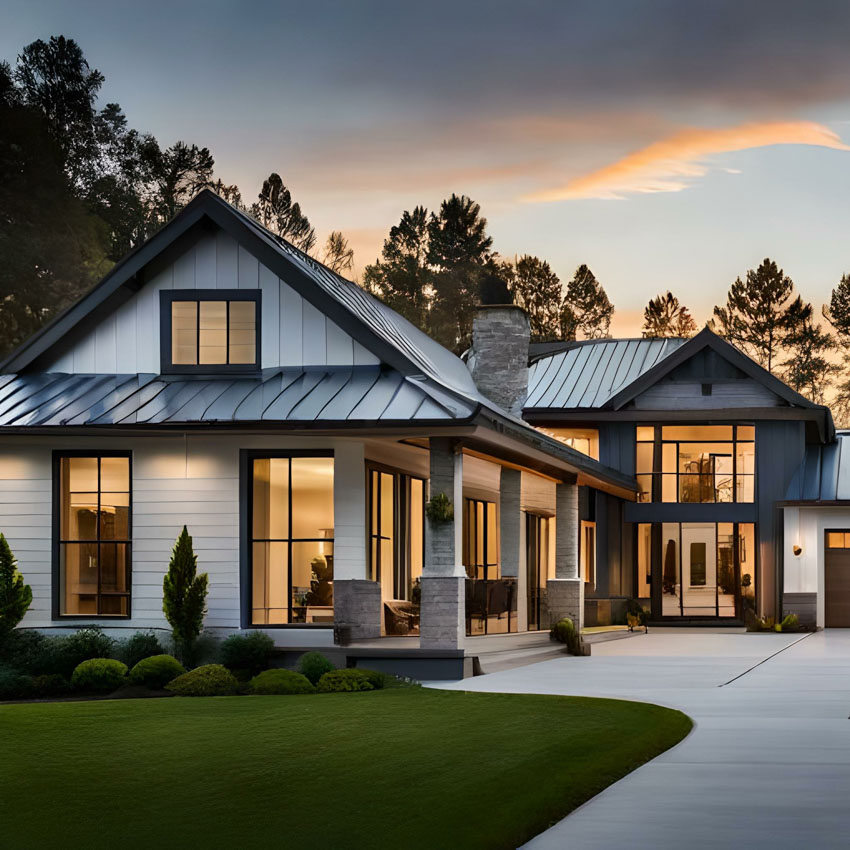What Size Generator Does a 1,500 Sq Ft House Need? (2025 Guide)

When the power goes out, having the right-sized standby generator means life can carry on almost as usual. For a typical 1,500-square-foot home, the generator size usually falls between 8 kilowatts (kW) and 22 kW.
What does that mean for you? An 8 kW unit can typically cover your basic needs. Think lights, refrigerator, and maybe a few chargers. A larger 22 kW unit can usually power your entire home, including your air conditioning.
Choosing the correct size is important. It helps your generator run efficiently, last longer, and cost less to operate in the long run. If figuring out the exact numbers feels like a big task, don’t worry. We can help with a free estimate to handle both sizing and installation for you.
What Changes How Big Your Generator Needs to Be?
The “right” size really depends on what you want to keep running when the power is off. Here are the main things to think about:
- Your Must-Haves: What can you not live without? Most people include the refrigerator, some lights, and the heating or air conditioning system (HVAC).
- Extra Appliances: Do you need your electric stove, oven, water heater, well pump, or sump pump to work? These items use a lot of power and will mean you need a bigger generator.
- Weather Extremes: Keeping your home warm in a freezing winter or cool in a blazing summer takes a lot of electricity. If you live where the weather gets intense, you’ll need more power.
- Your Home’s Efficiency: Newer homes or those with energy-efficient appliances often need less power. This might let you choose a smaller generator.
- Everything or Just Basics?: Do you want your home to feel exactly like normal, or are you okay with just keeping the important things running? Powering everything usually requires a 15 kW to 22 kW generator.
How to Figure Out Your Power Needs
Want to get an idea of your needs? You’ll have to do a little math. It’s about figuring out how much electricity your chosen appliances use.
- Make Your List: Write down every single item you absolutely want to have power during an outage. Be specific. Include things like your HVAC, refrigerator, freezer, lights in key rooms, TV, computer, Wi-Fi router, and medical devices.
- Find the Wattage: You need two numbers for many items: Running Watts and Starting Watts.
- Running Watts: How much power an item uses once it’s up and running.
- Starting Watts (Surge Watts): Many items, especially those with motors (like refrigerators and air conditioners), need a big surge of power just to get started. This can be 2 to 3 times their running wattage. You must account for the largest starting wattage you need.
- You can find these numbers on appliance labels, in user manuals, or by searching online.
- Add Them Up: Add up all the running watts for everything on your list. Then, find the single largest starting wattage and add that difference (Starting Watts minus Running Watts) to your total. This gives you a rough idea of the peak power you’ll need.
- Add a Buffer: It’s smart to add about 20% more to your total. This gives your generator some breathing room. It prevents it from running at full blast all the time, which is better for its health and lifespan.
Quick Wattage Checklist (Example)
Let’s try a simple example.
First, list your must-haves. For this example, let’s say HVAC (Central Air), Refrigerator, Some Lights, and Computer/Wi-Fi.
Second, find the watts (these are approximate):
- HVAC: 3,500 Running / 5,000 Starting
- Refrigerator: 800 Running / 2,000 Starting
- Lights: 400 Running / 400 Starting
- Computer/Wi-Fi: 300 Running / 300 Starting
Third, add it up and add a buffer.
- The Total Running Watts are 3500 + 800 + 400 + 300 = 5,000 Watts.
- The Biggest Surge Needed is from the HVAC (5,000 W). We need an extra 1,500 W (5000 – 3500) to start it.
- So, the Peak Need is 5,000 + 1,500 = 6,500 Watts.
- Now, add a 20% Buffer: 6,500 * 1.20 = 7,800 Watts.
- This means you’d look for at least an 8,000 Watt (8 kW) generator.
This can seem complicated. Getting it right is key to keeping things running smoothly. If you need help, we’re happy to do a detailed calculation for you.
Recommended Generator Sizes & What They Power
Here’s a general guide for a 1,500 sq ft home, breaking down what different sizes can typically handle:
Essentials Only Coverage
- Typical Size: 8 kilowatts (kW) to 12 kW.
- What It Usually Powers: This size covers the basics. Think your refrigerator, some essential lights, your Wi-Fi router, and maybe a small window air conditioning unit or space heater. It’s ideal for keeping critical systems running without powering the whole house.
Partial Home Coverage
- Typical Size: 12 kW to 15 kW.
- What It Usually Powers: This gives you more power. It can handle all the essentials plus extra appliances. Examples include a microwave, an electric water heater, or a sump pump. It’s a good middle-ground if you want more comfort but don’t need a full whole-house system.
Whole House Power
- Typical Size: 15 kW to 22 kW.
- What It Usually Powers: This size is usually enough for everything in a typical 1,500 sq ft home. It can handle central air conditioning, large appliances like electric stoves or dryers, and multiple lights and circuits all at once. This option ensures your home functions just like normal, even during a long outage.
What About Fuel? Propane vs. Natural Gas
Most home standby generators run on propane or natural gas. Your choice impacts how easy it is to refuel and how much it costs.
Propane (LP)
Propane is a popular choice because it burns cleanly and can be stored for a long time. You can use it even if you don’t have natural gas lines, but you will need a storage tank. You’ll also need to schedule refills, especially if you expect long outages and don’t have a very large tank.
Natural Gas
Natural gas is very convenient because it connects right to your utility line, giving you a continuous supply without refills. It’s often cheaper than propane too. The main downside is that you must have natural gas service available, and in very rare, major disasters, the utility line could be affected.
Both are great options. The best one for you often depends on what fuel sources you already use and your local availability.
Making the Right Choice
Picking the best generator size means knowing what you need powered, deciding on a budget, and choosing your fuel. Whether you need an 8 kW model for basics or a 22 kW powerhouse, getting the size right is vital.
It’s always best to get expert advice. At Premier Generators, we help homeowners like you find and install the perfect generator. We understand the details and can make sure you’re truly prepared.
Ready to get started? Schedule an estimate today, and let us guide you every step of the way.
Frequently Asked Questions (FAQs)
1. Can an 8 kW generator start my central air conditioner? Probably not. Most central AC units need a big surge (often 4 kW to 5 kW or more) just to start. An 8 kW unit might not have enough extra power left for anything else. If AC is a must, aim for 12 kW or higher.
2. What can I run with a 12 kW generator? Typically, you can run the essentials (fridge, lights, Wi-Fi), a well pump or sump pump, and a smaller AC unit or a few window units. But always add up your specific appliance needs.
3. Is a portable generator okay for my house? Portables can work for short outages. But they need manual setup, constant refueling (often with gasoline), must be kept far from the house, and need a proper transfer switch to be safe. A standby generator is much safer and fully automatic.
4. How loud are standby generators? Modern units are often quieter than a lawnmower, usually around 67 to 72 decibels when heard from about 23 feet away. They usually meet neighborhood noise rules.
5. Do I need a permit for installation? Yes. Installing a standby generator requires both electrical and often gas permits from your local city or county. A professional installer handles all this paperwork for you.
6. Does a generator increase my home’s value? Yes, often it does. A professionally installed standby system is a very attractive feature for buyers, especially where outages are common. It shows your home is prepared and secure.





